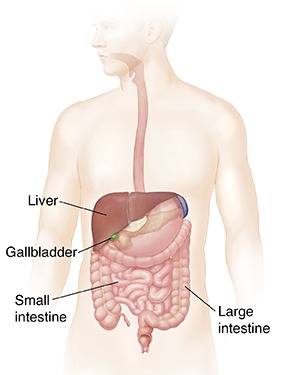Understanding the Liver Biopsy Procedure
Understanding the Liver Biopsy Procedure

The Liver
The liver is a large organ in the upper right part of the abdominal cavity. A healthy liver metabolizes proteins, carbohydrates, and fats. It also makes a digestive fluid (bile) and removes blood toxins.
Who needs a liver biopsy?
A liver biopsy may be done if you have:
Symptoms of a liver problem. These include yellowing skin and eyes or dark urine (jaundice) from infection, scarring, or damage from medicines.
Abnormal liver imaging tests, blood tests, or liver enzymes
A chronic liver condition, such as hepatitis or nonalcoholic fatty liver disease
An abnormal liver scan
What a liver biopsy can do
A liver biopsy helps your healthcare provider diagnose a liver problem, such as cirrhosis or a fatty liver. He or she looks at your liver cells under the microscope. It also helps the healthcare provider in finding the cause of your liver problem and how serious it is.
Possible risks and complications
Risks and complications can include the following:
Infection
Internal bleeding from the liver
Bile leakage
Rectal bleeding
Pain
Damage to organs near the liver. These include the lungs, gallbladder, kidneys, or intestines.
Need for a second liver biopsy if not enough liver tissue was taken the first time
Updated:
March 21, 2017
Sources:
Liver Biopsy. Rockey D. Hepatology. 2009;49(3):1017-44., Patient Information: Liver biopsy (Beyond the Basics). UpToDate
Reviewed By:
Fraser, Marianne, MSN, RN,Image reviewed by StayWell medical illustration team.,Lehrer, Jenifer, MD